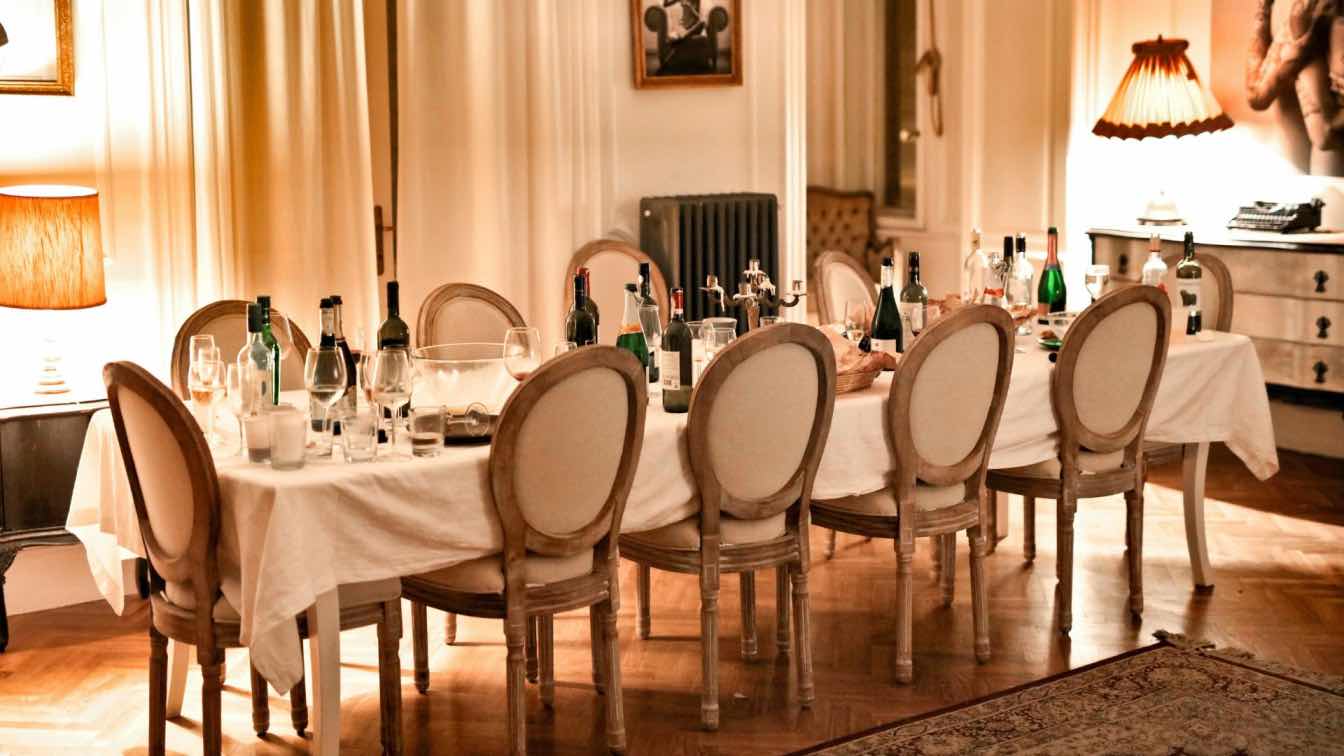A beautifully set dining table is the foundation of any memorable meal, whether you're hosting a casual family dinner or a formal celebration. The art of setting the table goes beyond simply placing plates and utensils; it's about creating an inviting and visually appealing atmosphere that enhances the dining experience. A well-set table demonstrates thoughtfulness, attention to detail, and a desire to make your guests feel special. In this article, we'll explore the elements of elegant dining room table settings and provide inspiration for creating stunning tablescapes for every occasion.
The Basics of Table Setting
Before diving into specific table setting ideas, it's essential to understand the basic components and principles of a well-set table. Here are the key elements to consider:
1. Tablecloth or placemats: A tablecloth or placemats provide a foundation for your table setting and help protect your table from spills and scratches. Choose a fabric and color that complements your decor and the occasion.
2. Dinnerware: The main components of dinnerware include dinner plates, salad plates, bread plates, and soup bowls. Select a style that suits your taste and the formality of the event.
3. Flatware: A standard place setting includes a dinner fork, salad fork, knife, soup spoon, and teaspoon. Arrange the flatware in the order of use, starting from the outside and working inward.
4. Glassware: A basic setting includes a water glass and a wine glass. For more formal occasions, you may also include a champagne flute or additional glasses for different wine pairings.
5. Napkins: Cloth napkins add a touch of elegance and can be folded in various ways to add visual interest to your table setting. Place the napkin to the left of the plate or on the dinner plate itself.
6. Centerpiece: A centerpiece, such as flowers, candles, or decorative objects, adds a focal point to your table and helps tie together your overall design.
By mastering these basic elements, you'll be well on your way to creating beautiful and inviting table settings for any occasion.
Casual Table Settings for Everyday Meals
Casual table settings are perfect for everyday meals and informal gatherings with family and friends. The goal is to create a welcoming and relaxed atmosphere that encourages conversation and comfort. Here are some ideas for casual table settings:
Mix and match dinnerware: Don't be afraid to combine different patterns and colors of plates, bowls, and glasses for a playful and eclectic look. Stick to a cohesive color scheme to maintain a sense of unity.
Incorporate natural elements: Use fresh flowers, greenery, or fruit as a centerpiece to add a touch of nature to your table. Mason jars or small vases filled with wildflowers create a charming, rustic vibe.
Keep it simple: For a casual setting, you can often skip the tablecloth and opt for simple placemats or a bare table. Use minimal flatware and glassware to keep the focus on the food and conversation.
Add personal touches: Incorporate small decorative elements that reflect your personality or hobbies, such as seashells, small potted herbs, or colorful napkin rings.
Remember, the key to a successful casual table setting is to create a warm and inviting atmosphere that encourages guests to relax and enjoy each other's company.
Formal Table Settings for Special Occasions
Formal table settings are reserved for special occasions, such as weddings, holiday dinners, or elegant dinner parties. These settings are more elaborate and follow a specific set of rules to ensure a polished and sophisticated presentation. Here's a step-by-step guide to creating a formal table setting:
1. Begin with a crisp, white or ivory tablecloth that drapes evenly on all sides of the table.
2. Place a charger plate in the center of each place setting. This large, decorative plate serves as a base for the other dinnerware.
3. Place the dinner plate on top of the charger, followed by the salad plate and soup bowl, if applicable.
4. Arrange the flatware in the order of use, starting from the outside and working inward. The dinner fork goes to the left of the plate, while the knife and soup spoon go to the right. The salad fork is placed to the left of the dinner fork, and the dessert fork and spoon are placed horizontally above the plate.
5. Place the bread plate and butter knife to the upper left of the dinner plate.
6. Arrange the glassware in a triangle above the knives. The water glass goes closest to the plate, followed by the white wine glass and the red wine glass.
7. Fold the napkin into a simple rectangle or a more elaborate shape and place it to the left of the forks or on the dinner plate.
8. Add a centerpiece, such as a floral arrangement, candelabra, or decorative objects, to complete the look.
When creating a formal table setting, pay attention to symmetry, balance, and the overall cohesiveness of the design. Small details, such as polished flatware, sparkling glassware, and crisp linens, can make a significant impact on the sophistication of your presentation.
Themed Table Settings for Holidays and Events
Themed table settings add an extra layer of fun and creativity to your dining experience. Whether you're celebrating a specific holiday or hosting a themed dinner party, incorporating decorative elements that reflect the occasion can make your table setting truly memorable. Here are some ideas for themed table settings:
Seasonal tablescapes: Use colors, flowers, and decorative elements that reflect the current season. For example, incorporate warm colors, pumpkins, and autumn leaves for a Thanksgiving table, or use pastel colors, eggs, and spring flowers for an Easter brunch.
Holiday-specific designs: Celebrate holidays like Christmas, Hanukkah, or the Fourth of July with table settings that feature traditional colors, symbols, and motifs associated with each occasion.
Travel-inspired themes: Transport your guests to a different country or culture by incorporating elements from your favorite travel destinations. Use exotic flowers, patterned textiles, or unique dinnerware to create a table setting that reflects the spirit of the location.
Movie or book-inspired tables: Bring your favorite fictional worlds to life with table settings inspired by popular movies, books, or television shows. Use character-specific decorations, color schemes, and props to create an immersive dining experience.
When creating a themed table setting, remember to balance the decorative elements with the practical necessities of dining. Ensure that your guests have ample space for their plates, glasses, and flatware, and that the decorations don't interfere with conversation or the enjoyment of the meal.
Conclusion
Setting a beautiful and inviting dining table is an art form that can elevate any meal or occasion. By understanding the basics of table setting and exploring various styles and themes, you can create elegant and memorable tablescapes that reflect your personal taste and the spirit of the event.
Remember, the key to a successful table setting is to create a balance between form and function. While decorative elements can add visual interest and help set the mood, it's equally important to ensure that your guests are comfortable and have easy access to all the necessary dining components. So go ahead and have fun with your table settings – mix and match patterns, incorpor ate personal touches, and exper iment with different styles until you find what works best for you and your guests. With a little creativity and attention to detail, you can transform your dining room into a breathtaking space that encourages conversation, laughter, and cherished memories around the table. And don't forget about the importance of comfortable seating – well-designed modern dining chairs can make all the difference in your guests' enjoyment of the meal and the overall ambiance of your dining space.





